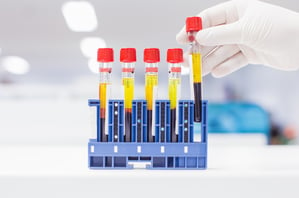In a recent Health Informatics Journal article reporting of “true integration” of electronic laboratory results, it was mentioned that transcription errors remain a bottleneck with comprehensive electronic health records. This shouldn’t come as a surprise to those who encounter paper labs every day in their daily workflow. For most hospitals, a significant number of records are interfaced. But if you are working with paper daily, you might think it debatable that manual data entry is insignificant.
These days, clinical informatics departments are working hard to solve many priority issues. But depending on where your hospital is located geographically, your clinical information challenges have a direct correlation with the patient population your hospital is serving. For example, if your patients travel very long distances to your facility, it is very likely that your clinical services are handling and entering results from paper labs and dealing with costly transcription errors.
Similarly, if you are like most organizations, you
are making do with the precious available resources. You divide up the required and clinically relevant data entry tasks among your staff, including the higher paid providers or staff that are best utilized for anything other than data entry. You guessed it, I am talking about physicians or nurse care coordinators. A recent article in Becker’s Hospital Review titled “25 quotes that show just how fed up physicians are with EHRs” highlighted this point precisely.
The amount of time available for caregivers to spend with patients is rapidly being encroached by the EHR. Caregivers have high expectations of a complete patient history, in the form of notes, laboratory results and trending analysis. To quote Health Informatics Journal: “Laboratory data in a hospital EHR may come from hospital laboratories, point of care testing performed at the patients’ bedside, or from outside reference laboratories. It is estimated that independent/commercial (“reference”) laboratories account for 38.7percent of the laboratory market…”
Before the physicians see information in the EHR, many clinical care coordinators spend time reviewing documentation manually and determine which outside information needs to be entered. The documentation then goes back to the data entry team, only then does this information become available to all. How much time is lost is difficult to calculate. But when you are waiting to care for patients and meaningful data is not available, there are costs at many levels, most importantly for the patient, but also for the staff, the department budget and quite possibly the rating of the hospital.
Fortunately, there’s a better way to manage these important records with intelligent clinical data capture software that can automatically identify the information your team wants to see in the patient record without having to enter the data manually. This approach eliminates transcription errors and reduces the time it takes critical patient information to reach the electronic patient record.